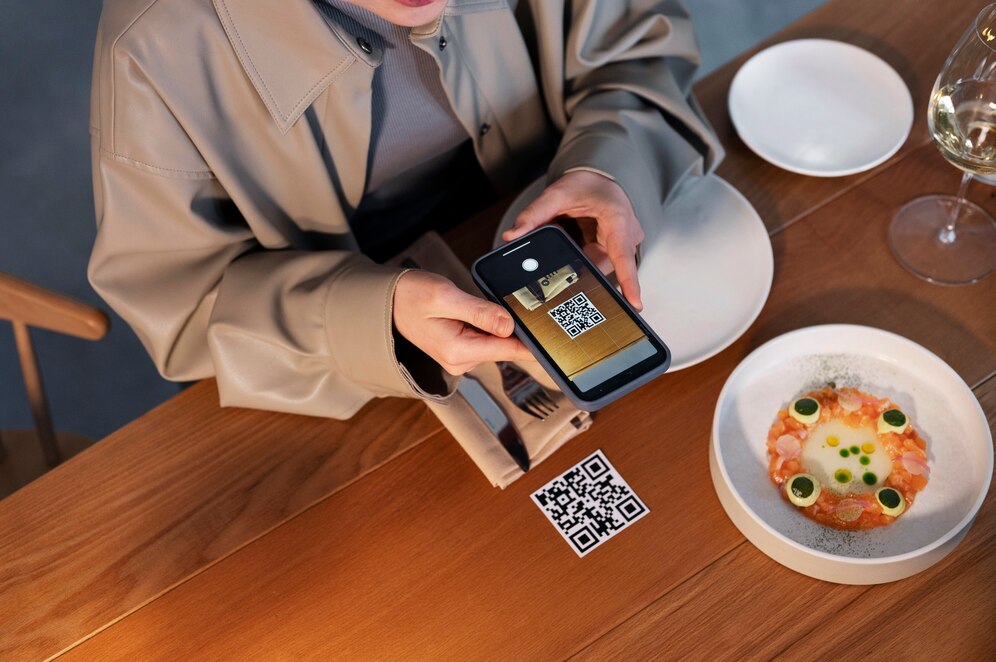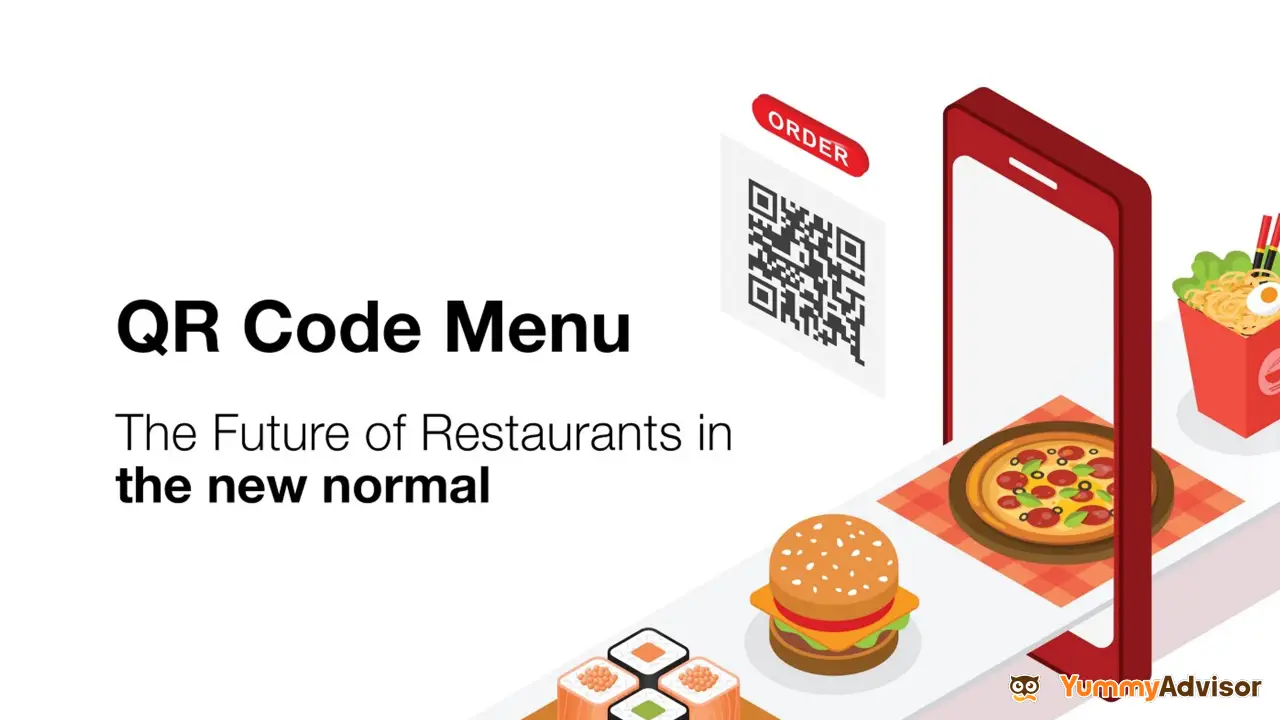1. The catering industry is one of the primary users of QR codes
QR code menus have become a prominent trend in the restaurant industry as they enable restaurants to offer guests a contactless experience. In addition to digital menus, restaurants can also leverage QR codes for marketing, gathering feedback, collecting customer data, and more.
If you want to implement QR codes in your restaurant business, this ultimate guide is your one-stop solution.
COVID-19 has crippled the restaurant industry, especially early in the pandemic. Restaurants were among the first businesses to close, resulting in huge losses for small eateries. More than 110,000 restaurants closed in 2020 in the U.S. alone, with a cumulative revenue loss of more than $60 billion. While most restaurants reopened after a while, it wasn’t as it was before. People want to avoid human contact.
Restaurant traffic has plummeted as restaurants are often overcrowded. At the same time, online food delivery has increased dramatically. As a result, in-house dining at restaurants was significantly reduced in 2019 compared to 2020. Restaurants need to find a way to get people back to dining in restaurants while addressing all the safety and sanitation concerns. The biggest concern in a pandemic is human-to-human contact. Restaurants must find ways to provide guests with a contactless experience.
This is where QR codes come into the picture. Restaurants replaced physical menu cards with QR code menus where a type of QR code is used in restaurants that redirect users to a digital menu. Instead of touching menus and other surfaces, guests can access menus and order by simply scanning a QR code.
Restaurants have also implemented other applications of QR codes such as marketing, reservation, location sharing, customer engagement, and more. Soon, QR codes became a major trend in the catering industry. Restaurants all over the world are currently using QR codes to improve customer experience and business growth. Although the pandemic has (almost) gone, QR codes in restaurants offer benefits beyond the contactless experience. They help restaurants deliver an exceptional dining experience and improve staff efficiency. Therefore, QR codes in restaurants will be around for years to come.
2. What is the QR code menu?
QR code menus are QR codes that redirect people to a digital menu page. After scanning the QR code, guests are taken to a display page containing the restaurant’s menu. They can check available items and prices on their mobile phones.
3. How does the menu QR code work?
QR code menus are one of the most prominent trends in the restaurant industry. A report published by the Food Research Institute found that 49% of respondents had used QR code menus at restaurants. That number increases to 68 percent for Gen Z and 78 percent for Millennials. Now many POS Systems on the market are capable of a QR Ordering feature, using one POS system will help you a lot.
4. Why do restaurants use QR code menus?
From a security and technology standpoint, QR code menus are an essential upgrade for restaurants. It can add significant value to your restaurant by enhancing the consumer experience and helping you gain repeat customers. Here are the main advantages of restaurant QR code menus.
Provide a touchless experience
QR code menus provide a touchless experience for your guests. With QR code menus, restaurant guests no longer need to touch the physical menu that has previously been shared among thousands of guests. All they need to do is take out their mobile phones, scan the QR code, and order their preferred choice of food.
Reduce printing costs
The average cost of printing a tri-fold menu, including design and covering costs, can exceed RM 100 per menu. On the other hand, the printing cost of the QR code menu is negligible. All you need to do is print out the QR code and place it on your guests’ tables. Therefore, QR code menus can help you reduce printing costs, which is essential because menu cost inflation is rising rapidly.
Menu items can be updated without reprinting. It’s common for restaurants to update their menus frequently by adding/removing items, changing prices, etc. However, updating menus can be costly. The menu must be reprinted every time the menu is updated. This can increase menu printing costs and hurt your bottom line.
QR code menus solve this hurdle. QR code menus (and other dynamic QR codes) provide real-time editing capabilities to edit menu items without having to reprint the QR code. So you can add or remove items, change their prices, etc., all the while using the same menu QR code.
Also, the QR code menu comes in handy when certain dishes are not available. You can instantly cross off unavailable dishes in the digital menu. As a result, guests will know ahead of time which items will not be available, improving the guest experience.
Collect useful customer data
QR code menus can also help you collect valuable customer data and get to know your guests better. You can know what food they ordered and their preferred time to go to the restaurant. You can use this information to send personalized messages and emails to your guests and build meaningful relationships with them. Additionally, you can view the scanned locations and devices used. This data can be valuable if you have multiple restaurants.
Promote your website and application
QR code menus can also be excellent marketing tools. You can provide a link to your website or mobile application on the menu page. Interested users can easily visit your website or download your app without manual searching. This is free and effective marketing.
Enhance customer experience
QR code menus improve the guest experience in several ways. They provide a touchless experience to ensure customers’ safety. Additionally, guests can access the menus, view available items, and order food instantly on their mobile phones. Hence, QR code menus can go a long way in providing your guests with a more pleasant dining experience.
Follow these best practices to get the best results from your QR code menus:
1. Decorate your menu QR code
Many restaurants make the mistake of boring black-and-white QR codes. Add appeal to your QR codes with QR shapes, colours, stickers, logos, and other custom elements. Encouraging people to scan your menu QR code and arrive at the menu page is not enough. Giving them a great experience on your menu pages is crucial. There are two things you can do to make your digital menu user-friendly:
Create a mobile-friendly menu page that is easy to load, scroll and navigate on mobile devices.
Design your digital menu to align with your brand and increase engagement. Make your QR code menus easy to scan. Guests should be able to scan your QR code menus in one go. Print a QR code that is at least 1 x 1 inch in size so guests can easily scan it. Also, if you create a colored QR code, use a contrasting colour for seamless scanning.
2. Update your menu regularly
Constantly update your menu content, including items and prices. More importantly, unavailable items should be highlighted. The biggest hurdle for guests is spending a few minutes deciding on something to order only to find that it’s not available. Make life easier for guests by letting them know in advance of items that are not available.
Summary
The restaurant industry is evolving rapidly, with new trends emerging every year. QR codes are a trend beyond restaurants—they are an important technological upgrade that can help restaurants deliver a better customer experience.
QR code menus are essential to all restaurants, regardless of their type and size. They enable you to offer a contactless dining experience while making the ordering process fast and efficient.
Additionally, you can use QR codes to accept online bookings, increase website traffic, collect feedback, promote your social media profiles, and more.



